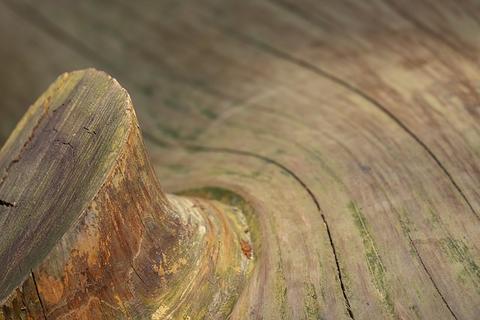
Since the beginning of time, wood has been among the most essential and desirable materials for building and craftsmanship. While exceptionally versatile, strong and beautiful, natural wood also can be difficult to work with. It’s inconsistent regarding strength, even sometimes within sections of the same piece. Its size and density fluctuate as it continually expands and contracts, as does it’s appearance, lending to its charm but adding to the challenges. While you can spend a lifetime learning about the types and properties of wood, when it comes to the working with it, the most crucial aspects to understand are the grain and cell fibers.
LEARNING ABOUT WOOD GRAIN DIRECTION
If you’ve ever looked at a chopped-down stump, you can see that trees grow in layers and each one is represented by a ring. Now imagine the tree that previously stood there and visualize the fibers from the stump running up in long, continuous strands. Learning how to identify annual rings and fiber and grain direction is critical to ensuring the wood is properly cut.
Knowing how wood works provides you with the ability to craft objects for optimal wood aesthetics. It also helps improve strength by cutting along the grain rather than against it. Choosing the correct grain direction makes for smoother cuts. If you cut across it, you will notice what’s known as tearout, which is essentially chunks of the connected fibers pulled apart from the surface, leaving it bumpy, pocked and splintered.
If you want to know more about the way wood works, consider the following tips for analyzing grain and fiber direction:
Inspect the surface: When looking at a cut plank, you need to consider the direction of the fibers on the top as well as the sides. As a general rule, if you are planing the top, use the side as your guide and visa-versa.
Look for the rays: As opposed to the annual rings that run in concentric circles, rays are a cell type that starts at the center of the tree and extends in a straight line through the rings out toward the bark. Visible in many types of woods but not all, following the rays is a sure fire way to cut with the grain.
Find the vessels: For hardwood from trees with very small ray lines, the vessels are the best substitute for nailing down the grain direction. Look for the dark lines that often appear like dashes on the plank. Viewed from the end grain, the vessels appear as pores or tiny holes in the surface.
Don’t get fooled by the figure: While the growth ring, or figure, is often the most visible element of a plank of wood, it’s not the best indicator of the angle of the fiber. Always try to first identify the ray or vessel. If that’s not possible, it’s recommended to follow the lines or general flow of the figure.
If you’re like most woodworkers, you’re interested in learning more about the way wood works and other ways to improve results. If you’re in the market for the highest-quality carbide tipped blades for crosscutting, rip cutting, or both visit Luxite Saw online to explore our impressive selection.

